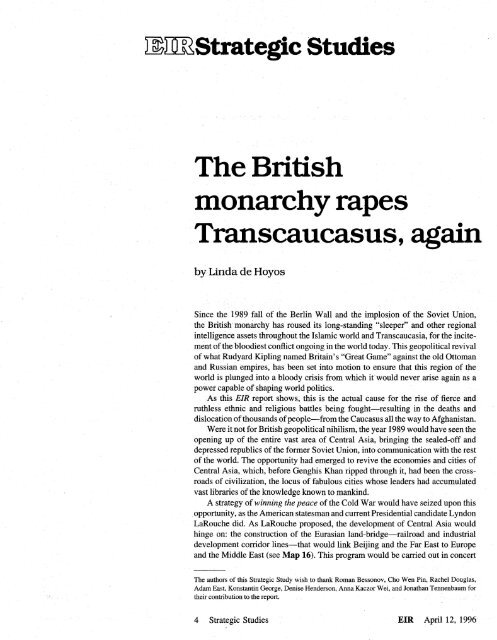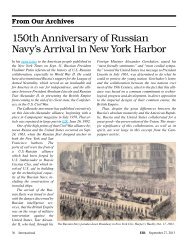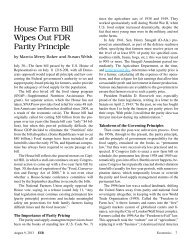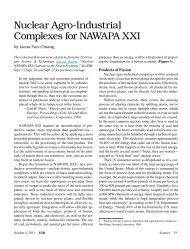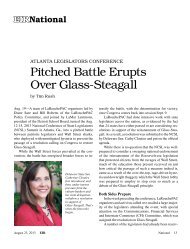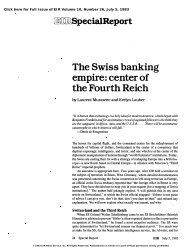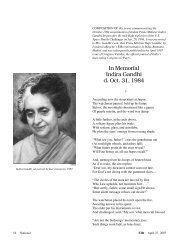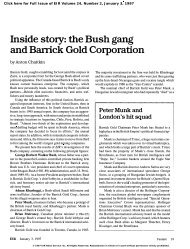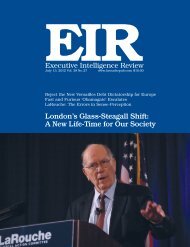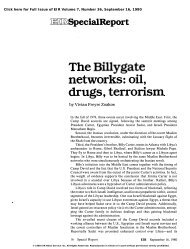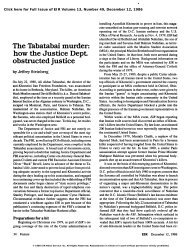Full Issue (PDF) - Executive Intelligence Review
Full Issue (PDF) - Executive Intelligence Review
Full Issue (PDF) - Executive Intelligence Review
Create successful ePaper yourself
Turn your PDF publications into a flip-book with our unique Google optimized e-Paper software.
.Strategie Studies<br />
The British<br />
monarchy rapes<br />
Transcaucasus, again<br />
by Linda de Hoyos<br />
Since the 1989 fall of the Berlin Wall and the implosion of the Soviet Union,<br />
the British monarchy has roused its long-standing "sleeper" and other regional<br />
intelligence assets throughout the Islamic world and Transcaucasia, for the incitement<br />
of the bloodiest conflict ongoing in the world today. This geopolitical revival<br />
of what Rudyard Kipling named Britain's "Great Game" against the old Ottoman<br />
and Russian empires, has been set into motion to ensure that this region of the<br />
world is plunged into a bloody crisis from which it would never arise again as a<br />
power capable of shaping world politics.<br />
As this EIR report shows, this is the actual cause for the rise of fierce and<br />
ruthless ethnic and religious battles being fought—resulting in the deaths and<br />
dislocation of thousands of people—from the Caucasus all the way to Afghanistan.<br />
Were it not for British geopolitical nihilism, the year 1989 would have seen the<br />
opening up of the entire vast area of Central Asia, bringing the sealed-off and<br />
depressed republics of the former Soviet Union, into communication with the rest<br />
of the world. The opportunity had emerged to revive the economies and cities of<br />
Central Asia, which, before Genghis Khan ripped through it, had been the crossroads<br />
of civilization, the locus of fabulous cities whose leaders had accumulated<br />
vast libraries of the knowledge known to mankind.<br />
A strategy of winning the peace of the Cold War would have seized upon this<br />
opportunity, as the American statesman and current Presidential candidate Lyndon<br />
LaRouche did. As LaRouche proposed, the development of Central Asia would<br />
hinge on: the construction of the Eurasian land-bridge—railroad and industrial<br />
development corridor lines—that would link Beijing and the Far East to Europe<br />
and the Middle East (see Map 16). This program would be carried out in concert<br />
The authors of this Strategic Study wish to thank Roman Bessonov, Cho Wen Pin, Rachel Douglas,<br />
Adam East, Konstantin George, Denise Henderson, Anna Kaczor Wei, and Jonathan Tennenbaum for<br />
their contribution to the report.<br />
4 Strategic Studies EIR April 12, 1996


